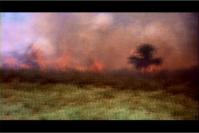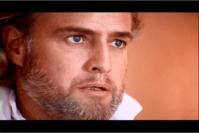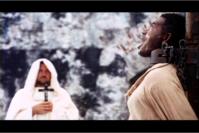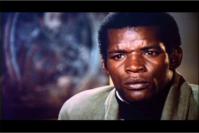This 10 year hiatus
lacks dramatic power as the decline of the new republic isn't adequately shown
[it's summed up in a sidebar during a meeting between Walker and the planters].
So the decade goes missing with both sides of the story. Rather simply two
agents of the sugar growers track down Walker in a seedy London tavern where
he's in the middle of a brawl. They offer him money, and he agrees to return to
Queimada and hunt Jose Dolores who has rebelled against the new government and
is carrying on a guerrilla campaign from the sierras.
It's a big story to
be sure, and a romantic one, although not romantic in the feminine sense. There
are no significant female characters, only fighting men and dead bodies, horses
and dogs. While Pontecorvo's objective was to blend the romantic adventure and
the film of ideas, Walker exists as a poet without a lover. He has the words,
he has the horse, he has the politics, but he has no woman. Jose Dolores has
the look, the words, and the machete, but no woman. Of all the principals, he
exists as an idea rather than as a character. If the goal here was to create
Lord Byron meets Black Orpheus, then the romance definitely goes
missing.
In some sequences,
Ennio Morricone's score with its harmonium and mad revivalist-tent choruses
suggests parody rather than realism, seems at odds with this somber story.
However, the fact
that 20 minutes was cut from the director's original 132 minute Italian version
doesn't help, and perhaps one day this version of Queimada will be available in
North America. You can see the brilliance in the authenticity of period and
setting, and it would be helpful to see the entirety of what Pontecorvo
created.
There's a lot of
panorama in this film, as Pontecorvo is the master of the long shot. Much of
the action is at a distance, seen through a telescope, seen from a hillside
looking down or looking up. Or the wide view, the omniscient view... a running
slave pursued by dogs, emerging from the stand of mature cane... or Walker
standing with his back to the burning field and the low bloated sun. It's a
documentary view, a newsreel view, an ideological view... at times an authentic
view.
In the second half,
Pontecorvo finds the rhythm of his story in the tension between dialogue and
landscape, irony and history. Walker and the redcoats hunt the rebels in the
sierra. The drums keep beating, the fires burning, and Jesus rides a white
horse. The sayings of Jose Dolores are repeated by the black population as
maxims for a future revolution.
While the highly
superstitious Pontecorvo might've been a lapsed Marxist, he wasn't adverse to
the deification of his victims, and Jose Dolores goes to the gallows secure in
the knowledge that through his legend he will rise again. If you compare his
character to that of the amazing Toussaint-Louverture, the black freeman who
fought a guerrilla war against the French (and the British & Spanish) in
the 1790s that led to the establishment of a black republic in Haiti, you will
recognize clear similarities; in fact the entire story of Queimada owes much to
the story of Haiti.
The character of Sir
William Walker is quite similar to that of his namesake, William Walker the
American mercenary who staged a coup in Nicaragua and had himself made
President for a brief period. This followed similar stunts in the Mexican state
of Sonora and Lower California. He was executed by firing squad in Honduras in
1860, an incorrigible apostle of Manifest Destiny. Again, the idea of a man of
action, he who can manipulate people, shape history, become a legend. The
difference, of course, is that Brando's character wants no power for himself.
He doesn't know why he does what he does, and he just wants to do it well. An
artist? The alter-ego of Pontecorvo himself? While Pontecorvo isn't credited
with the screenplay, you suspect a great deal of the story came from him,
especially when you compare it to his most famous film, The Battle of Algiers
(1966).
|

|



